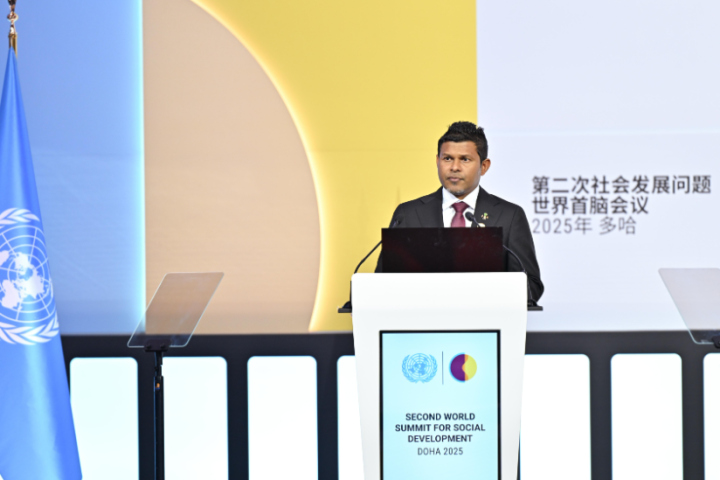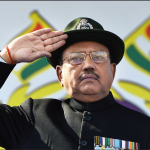The unexpected downfall of Prime Minister K. P. Sharma Oli’s government in Nepal has introduced a layer of unpredictability into the Himalayan nation’s international relations, particularly with Beijing. China’s response has been characteristically restrained: a congratulatory note to interim Prime Minister Sushila Karki, coupled with guidance for its nationals in Nepal to remain vigilant amid the transitional period.
This development marks a pause in the momentum of Sino-Nepalese cooperation. In December 2024, Mr. Oli’s visit to Beijing yielded a framework agreement aimed at strengthening ties under the Belt and Road Initiative (BRI), China’s sweeping infrastructure endeavour. During the trip, he expressed openness to Beijing’s Global Security Initiative and Global Civilization Initiative, initiatives that have sparked debate at home over their alignment with Nepal’s longstanding policy of strategic autonomy.
The timing of this recommitment held relevance for both nations. In Nepal, it came amid ongoing scrutiny of BRI projects, such as the Pokhara International Airport, constructed with Chinese support.
A parliamentary review identified discrepancies amounting to roughly 14 billion Nepalese rupees (approximately $105 million), including a contract valued at $215 million—$70 million above the Civil Aviation Authority’s $145 million estimate.
Issues raised included incomplete specifications, subpar materials, and outstanding taxes, prompting calls for greater oversight in collaborative ventures. From China’s perspective, the BRI’s broader aims have faced challenges in Nepal related to project timelines and fiscal implications.
Nepal’s external debt has grown, with China now accounting for about 4 percent of its bilateral obligations—a shift from the country’s traditional reliance on multilateral institutions. Mr. Oli’s engagement with Beijing extended to practical measures, like a transit agreement to broaden Nepal’s trade routes beyond its southern neighbour, India, and support for a potential rail link across the Himalayas.
These efforts, while ambitious, have encountered hurdles tied to the region’s challenging geography and differing priorities—Nepal’s preference for grants over loans, contrasted with China’s lending model.
His participation in Beijing’s Victory Day Parade on September 3, marking the 1945 end of World War II in Asia, also drew attention from Tokyo, a key Nepalese development partner, underscoring the sensitivities in Nepal’s multifaceted diplomacy.
On the security front, Mr. Oli’s nod to the Global Security Initiative—which promotes cooperative frameworks under international auspices—prompted questions in Nepal’s parliament.
Lawmakers from the CPN-Unified Socialist and Nepali Congress, including Prakash Jwala and Dilendra Babu, sought assurances that such alignments would not compromise Nepal’s nonaligned stance. They emphasized that involvement in external security arrangements could complicate the country’s independent path, a principle successive governments have upheld.
The Kathmandu Post echoed these concerns in a recent editorial, observing that prior administrations had maintained distance from the initiative and noting potential strains on relations with allies like Japan from high-profile engagements in Beijing. Such commentary reflects broader discussions in Nepal about navigating partnerships without undue entanglement.
The newspaper’s offices were vandalized during the recent Gen Z demonstrations, an incident that has fueled speculation about the motivations behind the act. However, representatives from the Gen Z groups have publicly distanced themselves from the act, stating that they harbor no motive to target media outlets and viewing the press as a vital ally in their push for accountability.
Cultural and educational exchanges have also deepened, with China funding scholarships for Nepalese students in disciplines ranging from medicine to engineering, and Confucius Institutes fostering Mandarin instruction. In Kathmandu, bilingual signage has become more common, signalling evolving people-to-people connections.
As Leela Mani Paudyal, a former Nepalese consul general in Lhasa, noted in Global Times, infrastructure advancements in the Tibetan Autonomous Region—known as Xizang—could yield mutual gains in trade, tourism, and cultural ties for Nepal and China, building on historical pathways across the plateau.
The protests led by younger Nepalese, which culminated in Parliament’s dissolution, arise from longstanding grievances: political volatility since the 2008 constitutional changes, demands for reforms, and a desire to shield domestic affairs from external pressures.
These movements, following earlier calls for institutional adjustments, have reshaped the political landscape, leaving room for new directions in governance and foreign policy. For Beijing, which has invested steadily in regional connectivity, this interlude in Nepal serves as a moment to recalibrate. As Ms. Karki guides the interim phase, the episode highlights Nepal’s ongoing balancing act—fostering beneficial ties while safeguarding its sovereignty amid the influences of its powerful neighbour.












